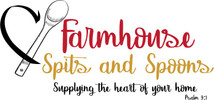Charcuterie: Inspiration on a Board
Mar 8th 2023
If you missed our class back on the 23rd, have no fear! we are breaking down the details of charcuterie, from history to techniques, right here! Keep an eye on our Facebook for upcoming cooking class dates, because we promise Julie from State of Graze will be back!
A charcuterie board is an appetizer, featuring a selection of preserved foods, especially cured meats and cheeses with crackers or bread. It is usually eaten straight from the board itself among a group of people.
The owners of shops specializing in charcuterie (charcutiers) in 15th century France became popular for their detailed preparation of cured meats and helped establish stylized arrangements of food as part of French culinary culture. Charcuterie also has its roots in the simple meals that had been eaten by laborers of the working class throughout Europe since the medieval period, often consisting of meats, cheeses, bread, local produce, and wine or beer. Like many other lower class customs, these meals evolved and found their way to higher society with the cheese course of formal dinners in 18th and 19th century Europe and colonial America.
The practice of hosting dinners became increasingly informal as time went on, especially by the 1910s, when formal dinners were largely replaced by cocktail parties where a variety of finger foods served throughout the night was preferred over scheduled meal courses. But it wasn't until the 1990s that charcuterie boards had a resurgence in popularity as American grocery stores diversified their offerings and specialty food stores became more common.
While charcuterie boards are common appetizers in restaurants today, they continue to find popularity in private gatherings like house and dinner parties due to their ease of preparation. Featuring dozens of meats, cheeses, and accompaniments such as fruits and vegetables (dried, pickled or fresh), breads or crackers, nuts, flowers, spreads, and sometimes even chocolate!
Charcuterie boards may also be accompanied by different varieties of beers or wines.
In addition to the food components, charcuterie boards themselves are typically made of either wood or stone (typically slate or marble) in order to keep foods cool during service. Other equipment present on the board may include cheese knives for guests to serve themselves, spoons and ramekins for portioning and holding spreads, and labels for the various meats and cheeses to help inform guests.

